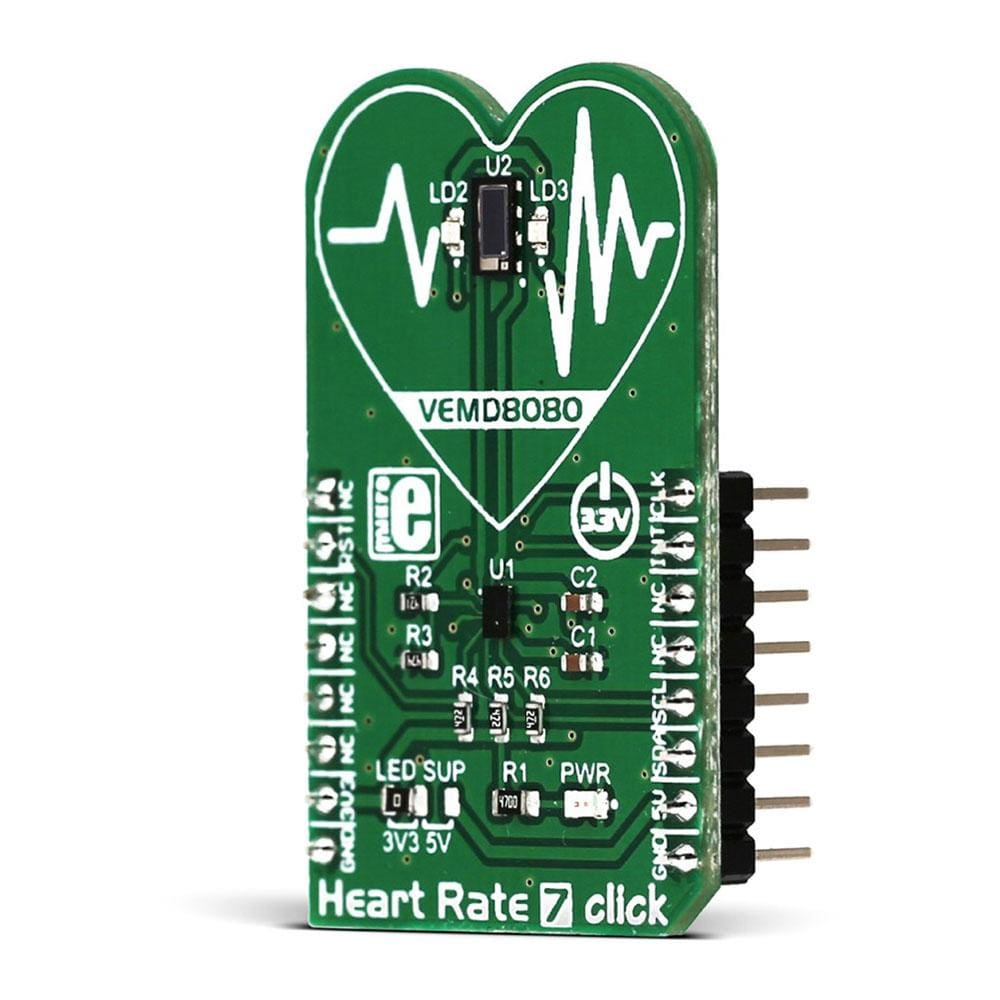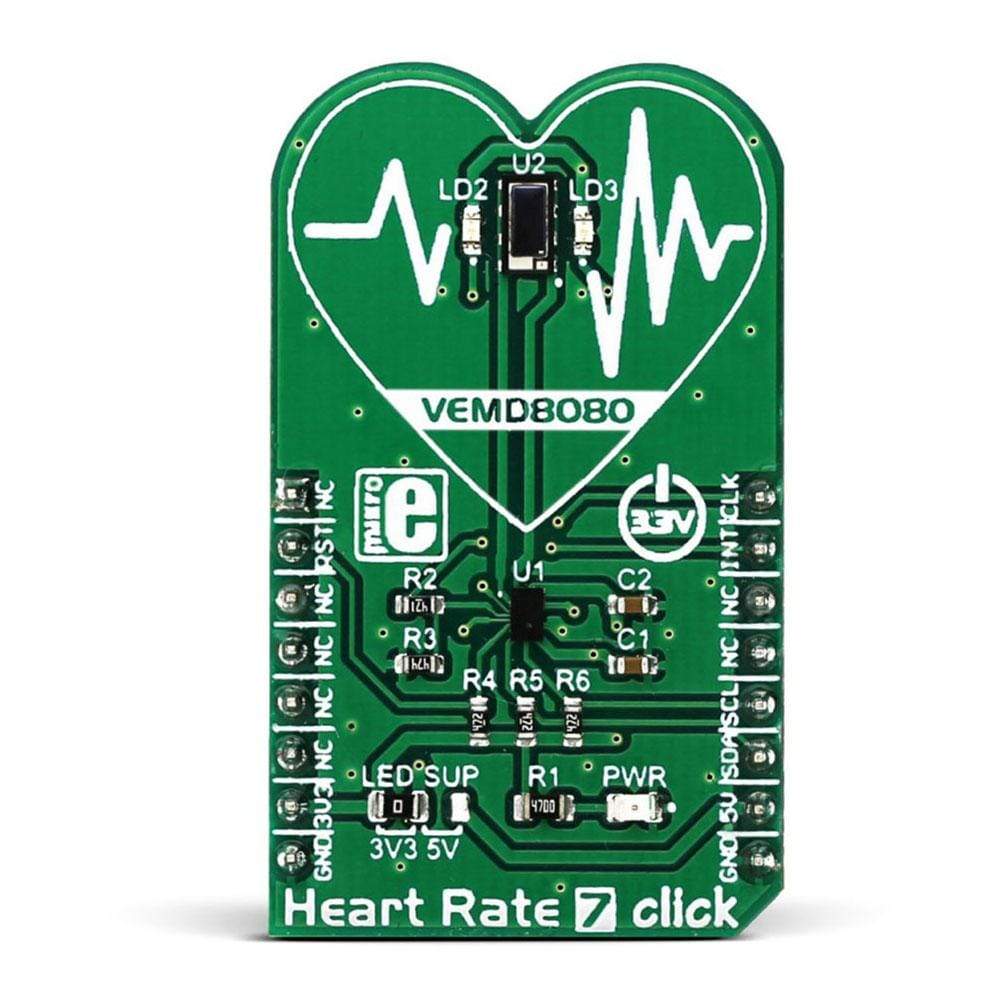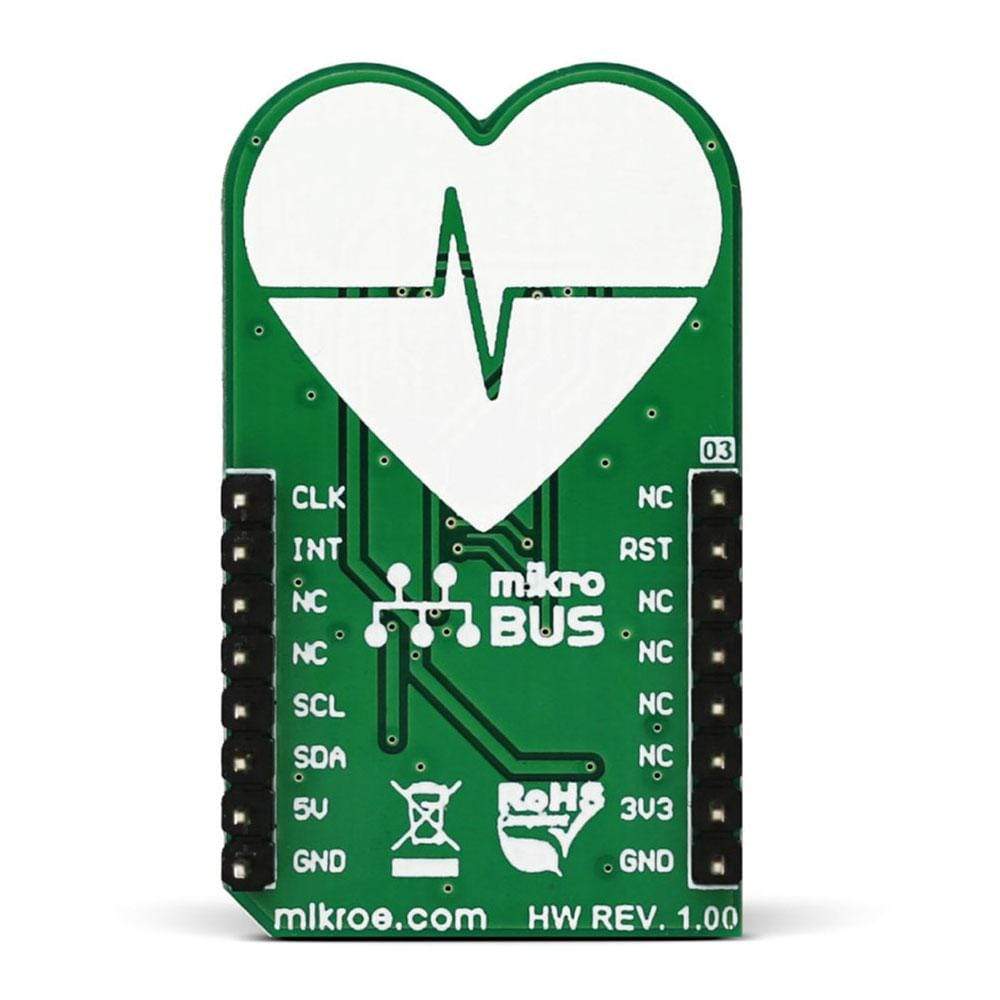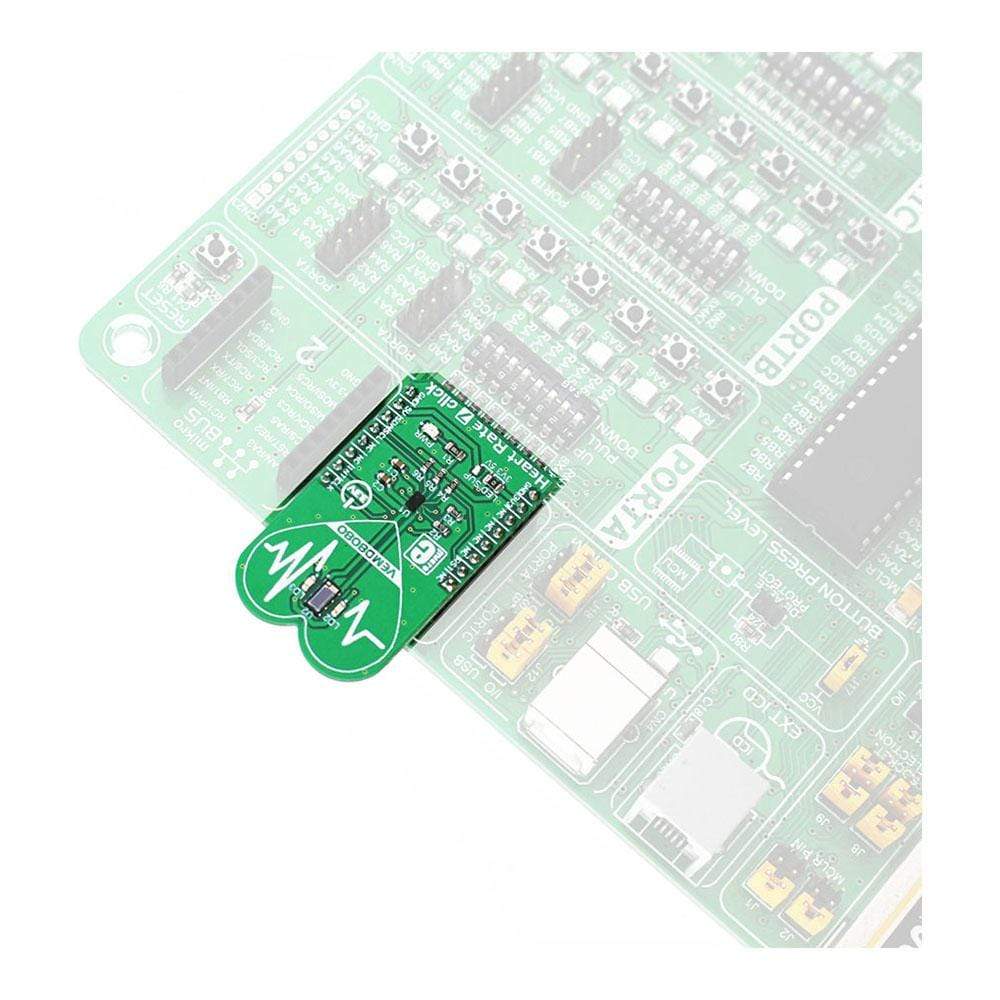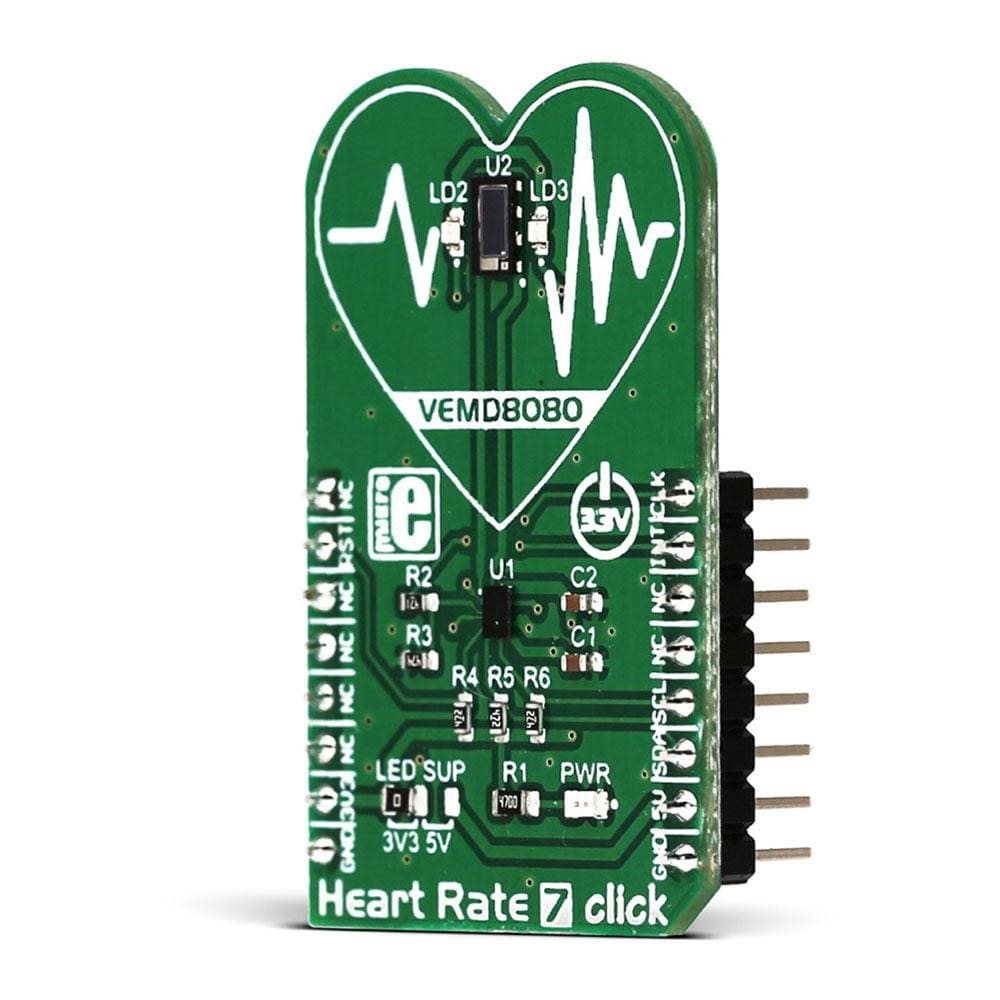
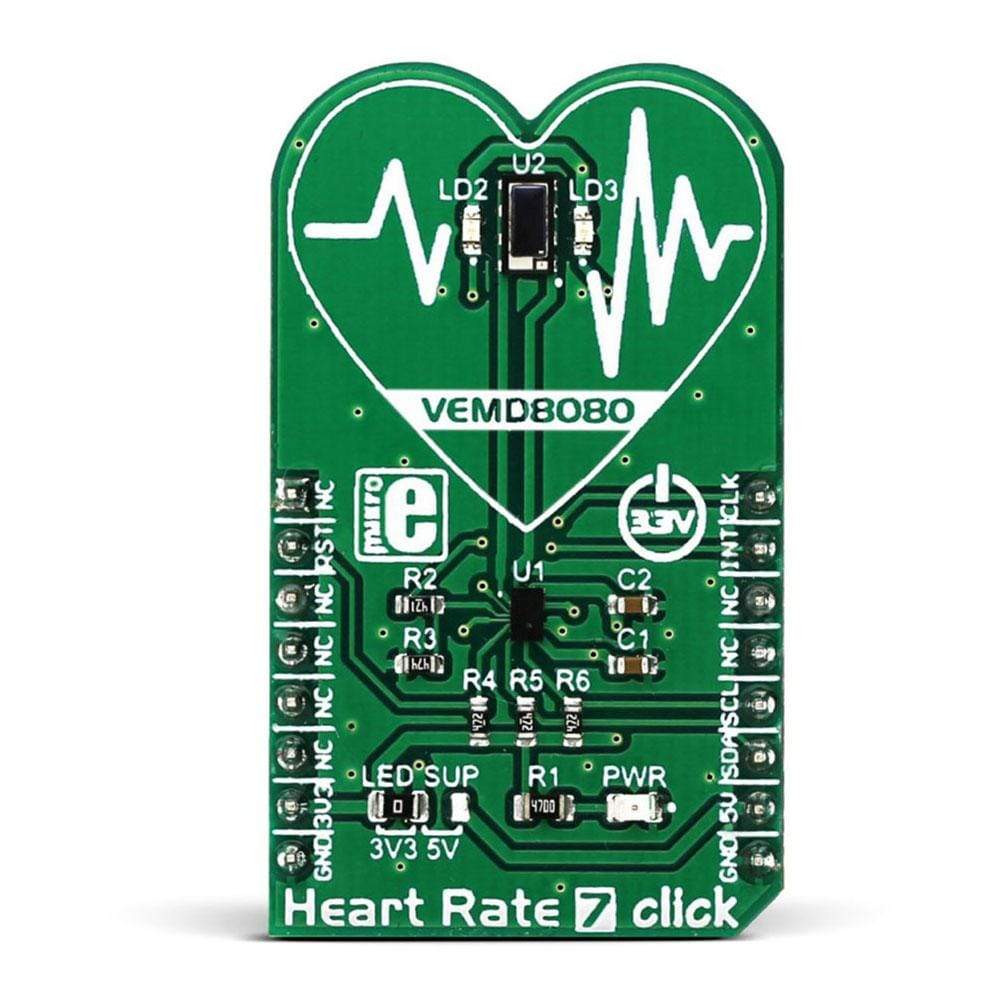
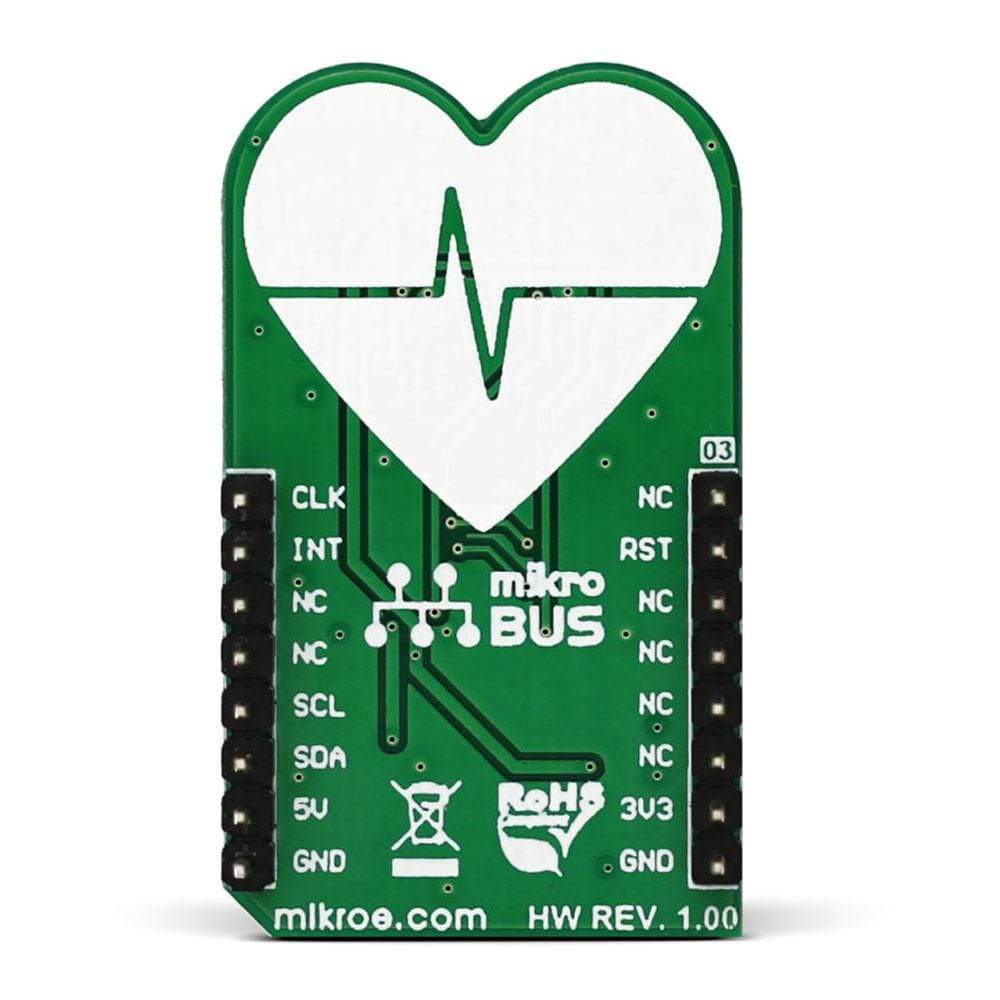
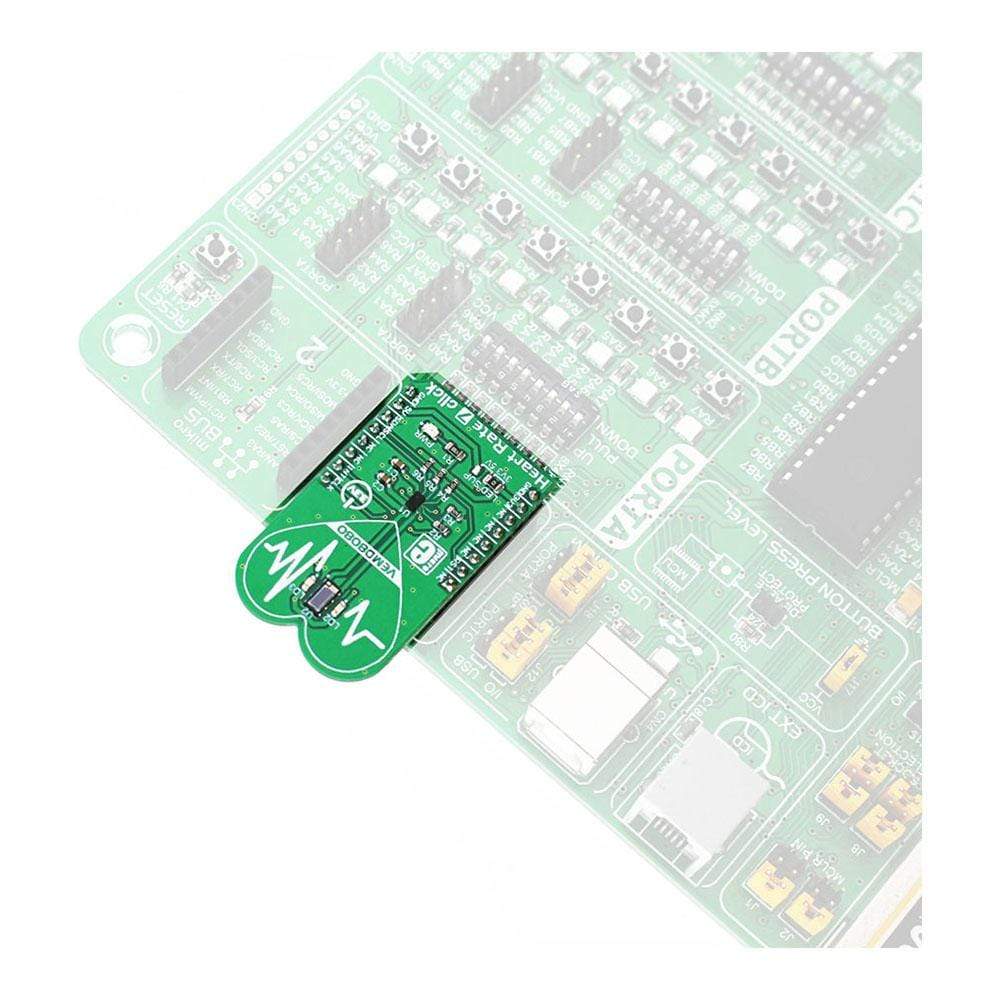
Overview
The Heart Rate 7 Click Board™ is an optical biosensor Click Board™ that can be used for heart-rate monitoring (HRM). This Click Board™ employs a very sensitive analogue front-end IC with a high dynamic range, which ensures accurate and reliable readings. This analogue front-end IC is coupled with the optical front end, which consists of a sensitive photo-diode (PD) and two high brightness green LEDs. The photo-diode is the most sensitive to a visible light spectrum, offering reasonably high current output compared to other, standard type PD elements used so far, thus providing very accurate HRM readings.
Downloads
Le Heart Rate 7 Click Board™ est un biocapteur optique Click Board™ qui peut être utilisé pour la surveillance de la fréquence cardiaque (HRM). Ce Click Board™ utilise un circuit intégré analogique très sensible avec une plage dynamique élevée, ce qui garantit des mesures précises et fiables. Ce circuit intégré analogique est couplé au circuit intégré optique, qui se compose d'une photodiode (PD) sensible et de deux LED vertes à haute luminosité. La photodiode est la plus sensible à un spectre de lumière visible, offrant une sortie de courant raisonnablement élevée par rapport aux autres éléments PD de type standard utilisés jusqu'à présent, fournissant ainsi des mesures HRM très précises.
| General Information | |
|---|---|
Part Number (SKU) |
MIKROE-2998
|
Manufacturer |
|
| Physical and Mechanical | |
Weight |
0.018 kg
|
| Other | |
Country of Origin |
|
HS Code Customs Tariff code
|
|
EAN |
8606018712908
|
Warranty |
|
Frequently Asked Questions
Have a Question?
Be the first to ask a question about this.

